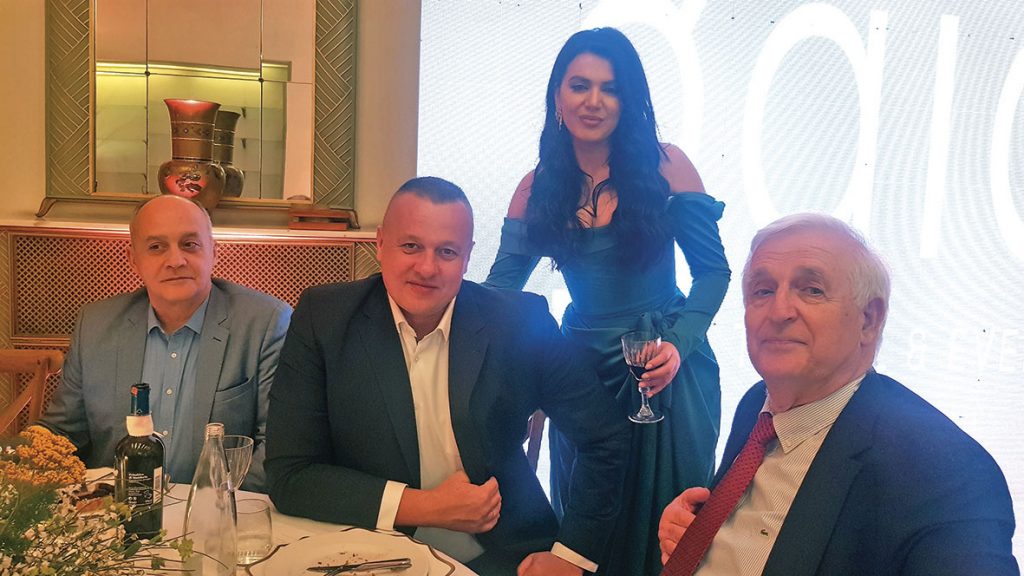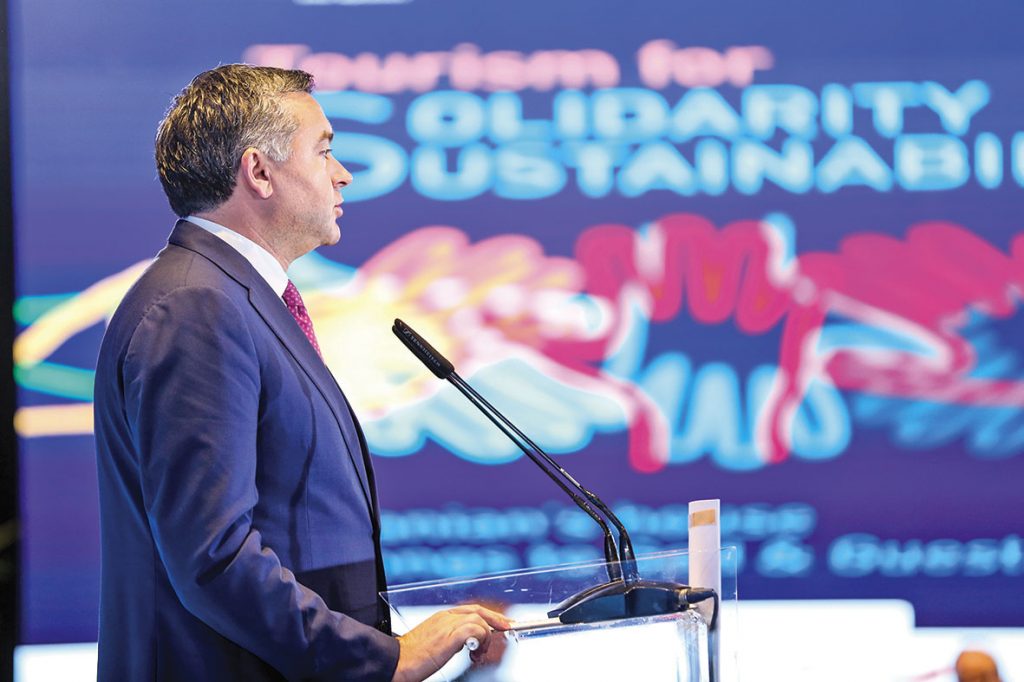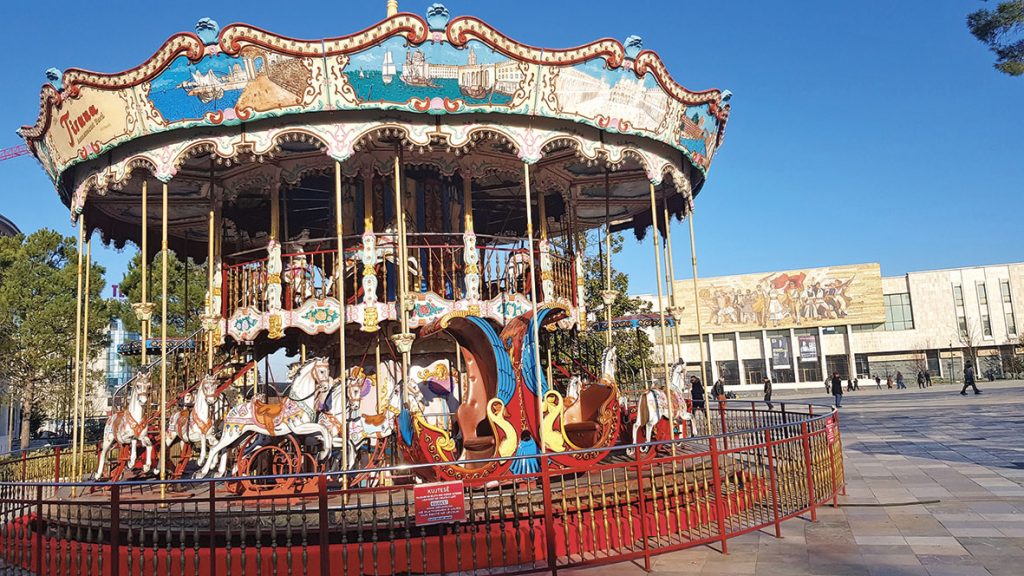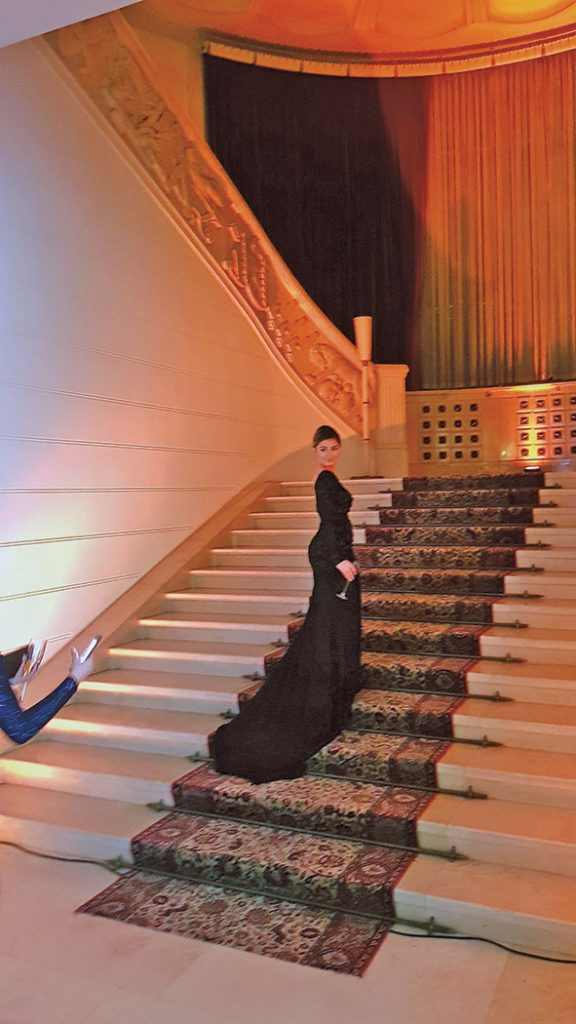 Gala dinner at the Presidential Palace
Gala dinner at the Presidential Palace
Together with his business partners, Muhammad Kurmeni, born in Ulcinj, is the owner of several hotels in the town of Durres, located on a Riviera that, in the last five years, has simply been flourishing. The sea here is clean, the beaches are sandy and the food is fresh, succulent and much cheaper than in the neighbouring countries popular with tourists – Greece and Montenegro
A few minutes before 4 a.m. on November 26th, last year, sleepy residents and a handful of guests of Durres were awakened by the intense tremors of the ground. 52 people were killed, almost half of them in Durres (25), 3,000 were injured, 14,000 were left homeless and 14,000 buildings were damaged in the earthquake.
“Fortunately, it wasn’t a weekend, otherwise there would be a lot more dead people in hotels,” Muhammad tells us as we drive down the main street in Durres, passing residential buildings and hotels on both sides of the road, damaged by the earthquake. Several buildings and hotels suffered such damage that they had to be demolished. The catastrophic earthquake in Albania, on the other hand, generated great solidarity among the local hoteliers who offered their temporary accommodation to the people who were left homeless, while many countries that neighbour Albania, including Serbia, sent their rescue teams, money, food, medications and medical supplies. The visit by Vučić, Djukanović and Zaev that followed further solidified the idea of the so-called “Mini Schengen” and stabilized the relations in this part of the Western Balkans. The good personal relationship between Aleksandar Vučić and Edi Rama has visibly benefitted the atmosphere between the official Belgrade and Tirana.
The plane was almost full in both directions, as we travelled by Airbus rather than ATR, as is the case with most cities in the region with seven Belgrade-Tirana flights a week. When we got there, we spoke Serbian everywhere and encountered no problems whatsoever. Even one of the taxi drivers tried to explain to us in Italian his fascination with the good relations between Serbia and Putin. The earthquake and what followed was also a good motive for the Albanian Ministry of Tourism and Environment to host an international conference called “Albania: Tourism for Solidarity and Sustainability” last week, dedicated to assistance to an earthquake-stricken country and the recovery of its tourism industry in international markets.

Albanian Minister of Tourism and Environment Blendi Klosi opens the conference
Serbia’s Assistant Minister, Renata Pindžo and YUTA Director, Aleksandar Seničić spoke on the topic. We were accommodated in a brand new, modern-looking hotel “The Plaza” in the town centre. From there, our hosts took us to dinner on a fortress that was built by the famous Albanian noble family, Toptani, back in 1798. The pedestrian zone inside the fort is brimming with tastefully decorated cafes and restaurants, the sidewalks are impeccably clean, the holiday lighting is appropriate…
”They take great care of decoration and design there. They have good taste, which they inherited from the Italians,” Adela Petrović, who runs the Albanian office of Direct Media in Tirana, tells me as we drink coffee in sun-kissed Belgrade in January. On the eve of the conference, the Albanian Minister of Tourism and Environment, Blendi Klosi hosted a dinner at the Gzona Restaurant. We feasted on traditional Albanian dishes prepared in a contemporary way and drank excellent local wines. Girls and women, all tall and pretty, tastefully dressed, devoid of plastic look, were all around us. The restaurant’s band plays “Shallow” while the director of the Environmental Protection Agency invites his colleague from the Ministry to dance with him. An unwitting traveller would be under the impression that they found themselves in a West European city, not a country that was once one of the poorest and most deprived countries of the Balkans. The Clock Tower I see from my hotel room was built in 1822. It stands at 35 metres tall and until 1978, it was the tallest building in Tirana. In the 10 years since I had been to the Albanian capital last, the progress here is visible to the naked eye: dozens of new buildings and hotels, parks and boulevards have been built. From time to time, you can see the relics of the socialist bunker past from the time when Enver Hoxha was an ally of Mao’s China and Europe’s most rigid communist dictator, as well as kitschy palaces built in Baroque and Renaissance imitations in the first ten years of transition. However, Tirana, led by young and pro-active mayor Erion Veliaj (age 41), is gradually starting to resemble a modern, well-organized metropolis with no over-sized monuments, as one can see in Skopje, or the flamboyant Christmas lights in Belgrade. I used the time between breakfast and the start of the conference to walk through the sunny squares and streets in downtown Tirana. The old people in the park are playing dominoes, while the National Museum has not been opened since the earthquake, as written on a notice printed on A4 paper, found at the entrance to an impressive building that contains the mosaic from Albanian history and the socialist revolution. There is also a large carousel in the central town square, but no children on it yet.

Children’s Joy and the Socialist Past: A scene from downtown Tirana
It was fascinating to see that the fronts of all buildings from the period between the wars are freshly painted and restored. The January sun and palm trees give an impression that we are in a Mediterranean town after all. The conference at “The Plaza” brought together representatives of line ministries and tourism companies from across the region, as well as the World Tourism Organization officials. Although announced as the conference speaker, Prime Minister Edi Rama was a no-show despite the security checking all parts of the hotel all morning. The conference was followed by an afternoon trip to Durres and lunch at one of the coastline hotels. I was seated next to the Slovenian Ambassador to Albania, Peter Japelj, a top intellectual and world traveller. He tells me about an Albanian movie “East, West, East: The Final Sprint” – a 2009 comedy in which a group of Albanian cyclists head to the Tour de France and find out in Trieste that a revolution has erupted in their country. The final event was the Gala Dinner at the Presidential Palace, i.e. the castle of Albanian King Zog I, whose construction began in 1936 and ended in 1941 at the expense of the Italian armed forces who occupied Albania, when the king was already in exile. The road leading to the palace and its exterior are very reminiscent of Beli Dvor (the White Palace in Belgrade) designed in the style of “monumental rationalism” by Gherardo Bosio, an Italian architect who worked extensively in the 1930s on designing urban centre of Tirana. Victor Emmanuel III, the King of Italy, was the only crowned head to ever sleep in the Palace and who visited this place in May 1941. The entrance to the Palace is adorned with socialist motifs, added after 1945. The marble staircase, leading to the first floor, features ‘fasces’, one of the prominent fascist symbols of the Benito Mussolini era, which somehow survived all the changes of governments and ideologies in Albania and with no-one paying attention to them anymore. A colourful company at our table, that included the ambassador of North Macedonia, the owner of a travel agency from Dubrovnik, several locals and the ambassador of Serbia to Tirana, Miroljub Zarić, known as a Yugoslav and Serbian record holder in ambassadorial tenure. Ambassador Zarić has been a diplomatic representative of Serbia in Albania for 17 years even though he has officially retired in the past few years, which is an absolute record even if we take to SFRY period into account. An experienced diplomat, who is fluent in Albanian, he is even more familiar with the situation in “Land of the Eagles”. At one time, the US ambassador persuaded him to write a memoir, but Zarić refused to do so. Ambassador Zarić tells us about the wedding of the young aspirant to the Albanian throne, Prince Leka II (age 38), who was allowed by the authorities in Tirana to have a wedding there, in 2016, at his grandfather’s palace attended by numerous European crowned heads, from the Spanish Queen Mother, Sofia to our Aleksandar Karadjordjević. During one of the music numbers at the Gala Dinner, I scrambled out of the main hall, climbed the stairs, and started wandering around the palace, colliding with numerous models and starlets and their friends posing for photographers in the lavish atmosphere of the castle.

The ill-fated castle of King Zog I: The presidential Palace in the suburbs of Tirana
As Albania strictly enforces smoking ban (in fact, except for Serbia, the ban is enforced in all Western Balkan countries, even in the Republic of Srpska) several women have been shaking from the cold while standing at the entrance to the palace and having a smoke. As “Tu Vuo ‘Fa l’Americano”, a famous 1956 Italian song from the movie “The Talented Mr Ripley” (1999) was playing in the background, I spoke to a Kosovo-born girl whose agency organized the event. She tells me that 99% of the hotel business in Albania is in the hands of local entrepreneurs. Some of this is “old money”, if it is at all possible to have „old money“ in transition countries, some of it a result of money laundering and sometimes it is an investment by the large and influential Albanian diaspora. Still, the mix of politics and private capital in Albania is obviously very strong and quite stimulating for the domestic entrepreneurial spirit. As I re-enter the hall, I can see that almost all hotel guests are dancing the kolo. The singer is singing a contemporary song with national lyrics, while men and women, both young and old, including the minister, are holding their hands and dancing. This scene would be impossible to imagine at Beli Dvor, for example, after an international conference in Belgrade. The Albanians, as a young nation, are experiencing the rapture that some other nations had 30, 50 or 100 years ago.
“People here are very divided; they argue about politics and business. Although, the Albanians from Albania don’t like the Albanians from Kosovo and those from the South don’t like those from the North, when a topic of national importance comes up, they are all like one,” one of the foreign ambassadors in Tirana says to me as he blows smoke from his cigar on a cold night in Tirana. The lesson here is very interesting, but I’m not sure how applicable it is to their neighbours; “the old nations” like the Serbs, Greeks, Montenegrins or Macedonians.
Text by: Robert Čoban